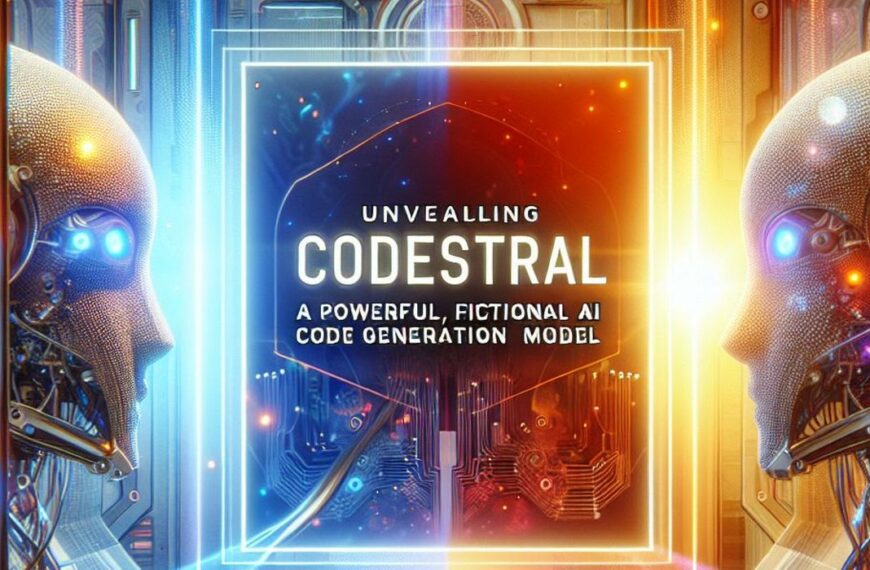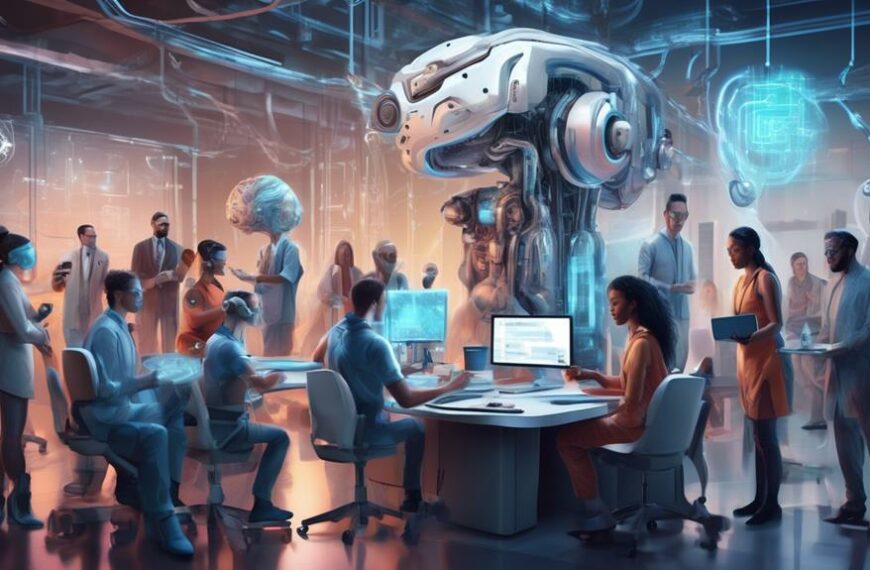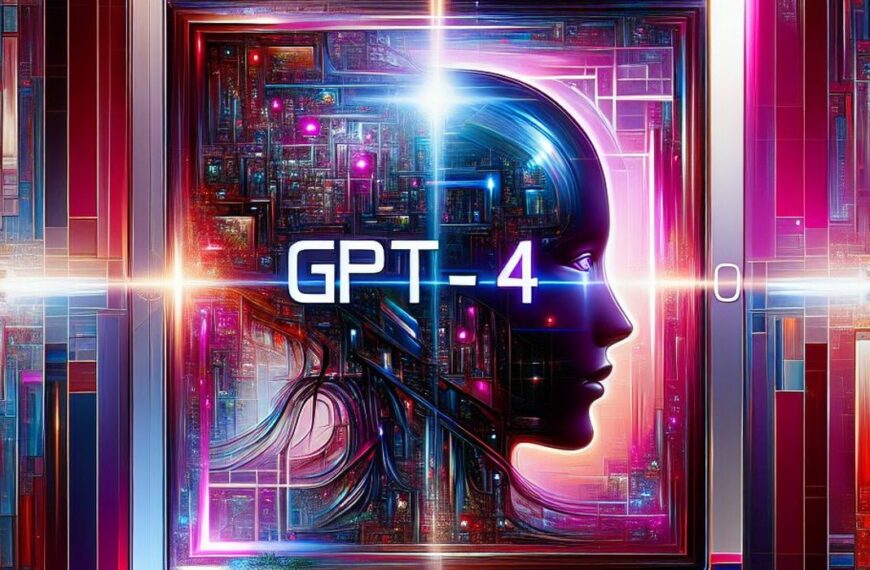They say knowledge is power, and with GPT-4 Turbo by OpenAI, that power has never been more accessible. This latest model promises to revolutionize the way you interact with AI, offering enhanced capabilities and a wealth of updated knowledge.But what sets GPT-4 Turbo apart from its predecessors? And how can you leverage its potential to boost your own productivity?Get ready to embark on a journey of discovery as we delve into the world of GPT-4 Turbo, exploring its features, advantages, and the exciting possibilities it holds for the future.
Table of Contents
Key Takeaways
- GPT-4 Turbo has an expanded context window of 128K tokens, allowing for more comprehensive text processing and analysis.
- It offers enhanced capabilities and features, including improved function calling accuracy, instruction following, format generation, and a customizable chatbot feature.
- GPT-4 Turbo is 3 times cheaper for input tokens and 2 times cheaper for output tokens compared to its predecessor, GPT-4, making it more accessible and affordable.
- The introduction of the GPT Store facilitates collaboration among creators of custom AI models, opening up new possibilities for innovation and customization.
Understanding GPT-4 Turbo
To understand GPT-4 Turbo, you need to grasp its evolution and key features.GPT models have come a long way, and GPT-4 Turbo represents the latest advancement.It offers enhanced capabilities, larger text processing capacity, and a customizable chatbot feature, all at a more affordable price.
The Evolution of GPT Models
GPT-4 Turbo, the latest model from OpenAI, introduces groundbreaking enhancements and expanded capabilities. Here’s how the evolution of GPT models has led to this new and improved version:
- Increased Context Window: GPT-4 Turbo boasts a 128K context window, allowing it to process larger volumes of text and provide more comprehensive data analysis.
- Cheaper Token Prices: Compared to its predecessor, GPT-4 Turbo is 3x cheaper for input tokens and 2x cheaper for output tokens. This reduction in prices makes AI technology more accessible for businesses and encourages innovation.
- Customizable Chatbot Feature: OpenAI has introduced a user-friendly customizable chatbot feature, enabling individuals to personalize their AI interactions without requiring coding skills. This empowers users to integrate AI into their work and life more effectively.
- Custom Models Program: OpenAI’s Custom Models program allows organizations to train a custom GPT-4 model tailored to their specific domain. This level of customization goes beyond fine-tuning, providing businesses with even more flexibility and control over their AI models.
Key Features of GPT-4 Turbo
With its extensive text processing capabilities and reduced token prices, GPT-4 Turbo offers a range of key features that enhance its value for developers and users alike. Here are some notable features of GPT-4 Turbo:
| Features | Description |
|---|---|
| Version | GPT-4 Turbo is the latest version of OpenAI’s AI model, incorporating advanced processing capabilities and updated knowledge. |
| ChatGPT | GPT-4 Turbo includes a customizable chatbot feature, allowing users to personalize AI interactions without coding skills. |
| Available | GPT-4 Turbo is available for customers to access and utilize its powerful capabilities. |
| Customers | GPT-4 Turbo caters to the needs of both developers and users, providing enhanced AI functionality for various applications. |
These features make GPT-4 Turbo a versatile and accessible tool for developers and users, empowering them to leverage AI technology effectively and efficiently.
Comparing GPT-4 Turbo with Previous Models
Now let’s compare GPT-4 Turbo with its predecessors, GPT-4 and GPT-3.5 Turbo.By understanding the improvements in GPT-4 Turbo, you can better appreciate its enhanced capabilities.From a larger context window to updated knowledge and improved function calling accuracy, GPT-4 Turbo offers significant advancements that make it a powerful AI model.
GPT-4 Turbo vs GPT-4 vs GPT-3.5 Turbo
When comparing GPT-4 Turbo with its previous models, one can observe significant advancements in capabilities and cost-effectiveness. Here is a comparison between GPT-4 Turbo, GPT-4, and GPT-3.5 Turbo:
- Context window:
GPT-4 Turbo boasts a 128K context window, offering a larger scope for understanding and generating text compared to GPT-4 and GPT-3.5 Turbo. - Cost-effectiveness:
GPT-4 Turbo is 3 times cheaper in terms of input tokens and 2 times cheaper in terms of output tokens than GPT-4. This reduced pricing strategy makes GPT-4 Turbo more accessible and affordable. - Enhanced features:
GPT-4 Turbo introduces improved function calling accuracy, instruction following, format generation, and JSON mode, enhancing its customization capabilities beyond what was offered in GPT-4 and GPT-3.5 Turbo. - Overall advancements:
GPT-4 Turbo presents an array of enhanced features, a larger context window, and a more cost-effective pricing structure, making it a more advanced and appealing generative AI model compared to its predecessors.
Understanding the Improvements in GPT-4 Turbo
Comparing GPT-4 Turbo with previous models reveals significant improvements in its capabilities and cost-effectiveness, making it a more advanced and appealing generative AI model.GPT-4 Turbo is 3x cheaper for input tokens and 2x cheaper for output tokens compared to GPT-4, highlighting its enhanced cost-effectiveness.This new model also excels in generating specific formats and assisting in coding tasks, making it more useful for users.Additionally, GPT-4 Turbo has a 128K context window, making it more contextually aware than its predecessors.Its ability to process up to 128,000 tokens of context enables analysis of extensive documents, equivalent to approximately 300 book pages.These improvements, along with the features of chatGPT Enterprise, make GPT-4 Turbo an appealing choice for businesses seeking advanced generative AI capabilities at a more affordable price point.
Introduction to Custom GPTs
Now, let’s explore the features of Custom GPTs and how you can access and use them.Custom GPTs allow you to tailor AI models to your specific needs and domain, providing more personalized and accurate responses.
Features of Custom GPTs
Custom GPTs offer tailored solutions and personalized experiences by leveraging the advanced capabilities of GPT-4 Turbo. These custom models provide a range of features that enhance user experience and enable specific functionalities. Here are some of the available features of custom GPTs:
- Function calling: With GPT-4 Turbo, you can describe app functions to the model, allowing it to generate intelligent outputs for your specific needs. This feature improves accuracy and enables more precise results.
- Generating specific formats: GPT-4 Turbo supports generating outputs in specific formats, such as JSON. By using the ‘response_format’ parameter in the API, you can constrain the output to conform to JSON, making it easier to integrate the model into existing systems.
- New features: OpenAI is continuously expanding the capabilities of custom GPTs. They’re introducing new features like the JSON mode and exploring fine-tuning programs to provide more customization options for organizations.
- OpenAI CEO Sam Altman: OpenAI’s commitment to accessibility and collaboration is evident through initiatives like the GPT Store. Sam Altman, OpenAI’s CEO, envisions a future where creators can easily share and collaborate on custom AI models, fostering innovation and inclusivity.
Accessing and Using Custom GPTs
To begin exploring the access and usage of Custom GPTs, let’s dive into an introduction to these tailored AI models and how they can enhance your experience. Custom GPTs are advanced versions of OpenAI’s previous models, offering improved performance and capabilities. With a larger context window of 128K, these models can generate more comprehensive and contextually accurate responses. They are also more cost-effective, being 3x cheaper for input tokens and 2x cheaper for output tokens compared to GPT-4. This makes them accessible and affordable for developers. Custom GPTs can be used for a variety of tasks and use cases, from data analysis to chatbots and app functions. They are designed to be better listeners and can follow instructions more accurately, making them ideal for tasks that require careful instruction following. With their updated knowledge and enhanced capabilities, Custom GPTs can revolutionize the way you interact with AI models.
| Key Features of Custom GPTs | ||
|---|---|---|
| Larger context window | 128K | |
| Cost-effectiveness for developers | 3x cheaper for input tokens, 2x cheaper for output tokens | |
| Improved function calling | Describing app functions for intelligent output |
Discovering OpenAI’s Assistants API
Now let’s explore the key functions of OpenAI’s Assistants API and how it can benefit you.The Assistants API allows you to build AI applications with goal-oriented capabilities and easily call the GPT-4 Turbo model.Whether you’re a developer looking to enhance your app’s functionality or a business seeking to streamline customer interactions, the Assistants API offers a powerful tool to incorporate AI into your workflows.
Key Functions of the Assistants API
The Assistants API allows you to harness intelligent output by describing app functions to models. Here are four key functions of the Assistants API:
- Easier interaction with external APIs: The Assistants API simplifies the process of integrating external APIs into your app. It reduces the need for multiple roundtrips with the model, saving time and increasing efficiency.
- Improved instruction following: With GPT-4 Turbo’s enhanced instruction following capabilities, you can provide more specific and nuanced instructions to the model. This is particularly useful for tasks that require generating JSON, XML, and YAML formats.
- Customizable chatbot feature: OpenAI has introduced a chatbot feature that allows you to personalize AI interactions without coding skills. This empowers individuals to tailor the AI experience to their specific needs, enhancing creativity and productivity.
- Experimental access program for fine-tuning: OpenAI is creating an experimental access program for GPT-4 fine-tuning. This program offers organizations the option to train a custom GPT-4 model tailored to their specific domain, further expanding the capabilities of the Assistants API.
With these key functions, the Assistants API provides a powerful tool for developers to leverage the intelligence of GPT-4 Turbo in their applications.
Who Can Benefit from the Assistants API?
Developers looking to integrate intelligent AI functions into their applications can benefit greatly from OpenAI’s Assistants API. The API is designed to help developers build AI applications with specific goals and model calling capabilities. It enables easier interaction with external APIs and reduces the need for multiple roundtrips with the model.With the introduction of GPT-4 Turbo, developers can leverage its enhanced capabilities and knowledge to create more advanced and sophisticated AI applications. OpenAI’s plans for the GPT Store further expand accessibility and collaboration among creators of custom AI models.Additionally, the Assistants API offers cost-effective pricing for input and output tokens, making it more affordable for developers to use. This makes the API a valuable tool for both individual developers and enterprise users who want to leverage AI technology and integrate it seamlessly into their applications.
Pricing Changes in the GPT Models
Let’s talk about the pricing changes in the GPT models and how they’re impacting developers.With the reduced pricing model for ChatGPT’s API, it’s now more cost-effective for developers to use GPT-4 Turbo, making advanced AI technology accessible to a wider range of innovators.This change aims to encourage greater experimentation and innovation, empowering developers to integrate AI into their projects and drive efficiency in their work.
Understanding ChatGPT’s Reduced Pricing Model
Understanding the reduced pricing model of ChatGPT’s API allows developers to access advanced AI technology at a more affordable cost. Here are four key points to help you grasp the significance of this pricing change:
- OpenAI has significantly reduced the pricing for developers using ChatGPT’s API, making it more accessible. Input tokens are priced at $0.01, and output tokens are priced at $0.03.
- Compared to its predecessor, GPT-4, the new GPT-4 Turbo model is 3 times cheaper for input tokens and 2 times cheaper for output tokens. It offers a wider 128K context window and knowledge of world events up to April 2023.
- OpenAI’s goal in introducing reduced pricing is to democratize AI technology and foster innovation and experimentation among developers.
- By making advanced AI more affordable, OpenAI aims to maintain its competitive edge in the AI market while ensuring accessibility for a wider range of users.
Understanding the reduced pricing model of ChatGPT’s API not only facilitates access to cutting-edge AI technology but also encourages innovation and engagement within the developer community.
Impact of the New Pricing Model on Developers
With the introduction of the new pricing model in the GPT models, developers can now access advanced AI technology at a more affordable cost.The pricing changes in GPT-4 Turbo have had a significant impact on developers. Compared to GPT-4, GPT-4 Turbo is 3x cheaper for input tokens and 2x cheaper for output tokens. This reduction in pricing makes it more accessible for developers to utilize the model and integrate it into their projects.The lower operational costs of GPT-4 Turbo aim to democratize AI technology, encouraging increased innovation and experimentation among developers. With more cost-effective options and extended prompt length, developers have the opportunity to explore the capabilities of GPT-4 Turbo without breaking the bank.This new pricing model opens up possibilities for developers to leverage advanced AI technology and drive progress in their respective fields.
Leveraging ChatGPT at Work
Now let’s explore the potential benefits of leveraging ChatGPT in your professional settings.Discover how businesses have successfully implemented ChatGPT to enhance customer support, streamline workflows, and improve overall efficiency.Explore real-life case studies that highlight the practical applications and positive outcomes of integrating ChatGPT into your work environment.
Benefits of Using ChatGPT in Professional Settings
Leveraging ChatGPT in professional settings offers professionals a powerful and cost-effective tool for generating specific formats, automating tasks, and analyzing extensive documents with enhanced knowledge and improved instruction following. Here are four benefits of using ChatGPT in professional settings:
- Efficient document analysis: With an expanded 128K context window by default, ChatGPT becomes a valuable asset for analyzing extensive documents. It can generate summaries and provide nuanced insights, saving professionals time and effort.
- Reduced legal risks: By using ChatGPT, professionals can mitigate potential legal claims around copyright infringement. The model doesn’t provide verbatim information and instead generates original content, ensuring compliance with intellectual property laws.
- Up-to-date knowledge: ChatGPT’s enhanced knowledge includes information up to April 2023, making it a reliable tool for staying informed about world events and current affairs.
- Streamlined workflow: ChatGPT’s improved instruction following and customizable chatbot feature enable professionals to automate tasks and interact with external APIs seamlessly. This integration of AI technology enhances productivity and efficiency in professional settings.
Case Studies of Successful ChatGPT Implementation
Have you ever wondered how ChatGPT is successfully implemented in various industries to improve communication, productivity, and customer support? Let’s take a look at some case studies of successful ChatGPT implementation:
| Industry | Use Case |
|---|---|
| E-commerce | ChatGPT has been used to provide personalized product recommendations and answer customer queries, resulting in increased sales and customer satisfaction. |
| Healthcare | ChatGPT has been integrated into medical platforms to assist doctors in diagnosing diseases, providing accurate information, and improving patient care. |
| Finance | ChatGPT has been utilized in financial institutions to automate customer support, handle routine inquiries, and provide personalized financial advice, leading to improved efficiency and customer experience. |
These case studies highlight the diverse applications of ChatGPT across industries, showcasing its ability to enhance communication, streamline processes, and deliver exceptional customer support. Successful implementation of ChatGPT has transformed the way organizations operate, paving the way for increased productivity and innovation.
Protecting Users from Copyright Lawsuits
Now let’s talk about how OpenAI protects you from copyright lawsuits.With their Copyright Shield program, OpenAI provides copyright indemnity to enterprise users, defending them against legal claims related to copyright infringement. This means that if any copyright issues arise while using OpenAI’s platforms, they’ll take responsibility and cover the costs, giving you peace of mind and protecting you from potential legal trouble.This is a significant step in ensuring that developers can use OpenAI’s technology without worrying about unintentional copyright violations.
How OpenAI Shields Users from Lawsuits
OpenAI’s program, Copyright Shield, offers copyright indemnity to enterprise users, protecting them from potential legal claims related to copyright infringement. Here’s how OpenAI shields users from lawsuits:
- Comprehensive Protection: Copyright Shield covers generally available features of ChatGPT Enterprise and OpenAI’s developer platform, ensuring users are safeguarded while utilizing the AI technology.
- Legal Defense: OpenAI takes responsibility for defending its customers and covering the costs incurred in legal claims associated with copyright infringement, alleviating the financial burden and potential legal consequences.
- Industry Precedent: Google and Microsoft have already implemented similar copyright protection measures, indicating the importance of shielding users from copyright lawsuits in the AI industry.
- User Confidence: By offering copyright indemnity and actively protecting against copyright lawsuits, OpenAI instills confidence in its users, allowing them to fully utilize GPT-4 Turbo without the fear of legal repercussions.
With Copyright Shield, OpenAI demonstrates its commitment to supporting its users and promoting responsible and legal use of AI technology.
Implications of Copyright Protection for Developers
Copyright protection for developers has significant implications in protecting users from copyright lawsuits. OpenAI’s Copyright Shield program plays a crucial role in safeguarding openAI customers and developers from potential legal claims related to copyright infringement.This program provides copyright indemnity to enterprise users, covering their legal costs and defending them against any accusations of copyright violation. By implementing measures similar to those of Google and Microsoft, OpenAI aims to ensure that developers and organizations can utilize AI models like GPT-4 Turbo without fear of facing copyright lawsuits.The Copyright Shield program provides assurance and protection to users leveraging AI technology for various applications, allowing them to focus on innovation and creativity without the concerns of potential copyright issues.
What Does the Future Hold for GPT Models?
The future of GPT models holds immense potential for advancements in AI technology and its applications. As seen with the introduction of GPT-4 Turbo by OpenAI, the capabilities of AI models are constantly improving.Here are four key aspects to consider regarding the future of GPT models:
- Enhanced Performance: GPT-4 Turbo performs better than its predecessors, offering a larger context window of up to 128,000 tokens. This allows for more comprehensive data analysis and nuanced insights, leading to improved decision-making and problem-solving.
- Increased Accessibility: OpenAI has made GPT-4 Turbo more affordable, reducing the prices for both input and output tokens. This move aims to encourage innovation and experimentation among developers, making AI technology more accessible to a wider range of individuals and organizations.
- Customization Options: The future of GPT models involves providing users with more customization options. OpenAI has introduced a customizable chatbot feature, empowering users to personalize AI interactions without coding skills. Additionally, OpenAI’s plans for the GPT Store and the Custom Models program further expand accessibility and collaboration, allowing users to create and train custom GPT models tailored to their specific needs.
- Expanded Capabilities: GPT-4 Turbo incorporates new multimodal capabilities, such as vision and text-to-speech, opening up possibilities for AI models to process and generate content across different modalities. This expansion of capabilities paves the way for more diverse and advanced AI applications in various industries.
Frequently Asked Questions
Is GPT-4 Turbo Available?
Yes, GPT-4 Turbo is available! It’s OpenAI’s latest model with enhanced capabilities, larger text processing, and updated knowledge. OpenAI has also reduced prices to make it more accessible, encouraging innovation and experimentation.
What Is the Latest Version of Gpt?
The latest version of GPT is GPT-4 Turbo. It offers enhanced capabilities and knowledge, allowing you to process larger volumes of text and gain comprehensive data analysis. It’s more accessible and comes with a customizable chatbot feature for personalized AI interactions.
Is GPT-4 Updated to 2023?
Yes, GPT-4 is updated to 2023, providing you with the latest information and insights. With its enhanced capabilities and larger context window, it offers comprehensive data analysis and supports up to 128,000 tokens of context.
Why Is GPT-4 Turbo Cheaper?
GPT-4 Turbo is cheaper to encourage more people to use AI technology. OpenAI reduced prices to make it affordable for developers, allowing them to input information and get answers at a lower cost.
Conclusion
So why wait? Upgrade to GPT-4 Turbo today and unlock the full potential of AI. With its advanced capabilities, comprehensive data analysis, and customizable chatbot feature, this latest model from OpenAI is the perfect tool for boosting your creativity and efficiency. Plus, with reduced prices, AI technology is now more accessible than ever. Don’t miss out on experiencing the future of AI – get GPT-4 Turbo now.





Leave a Reply